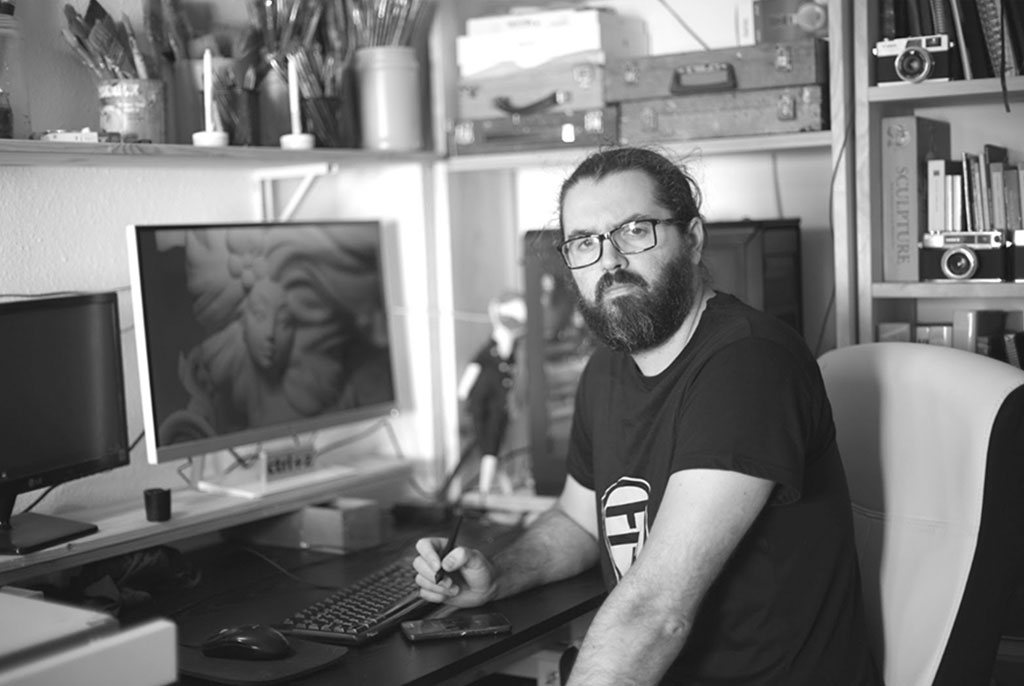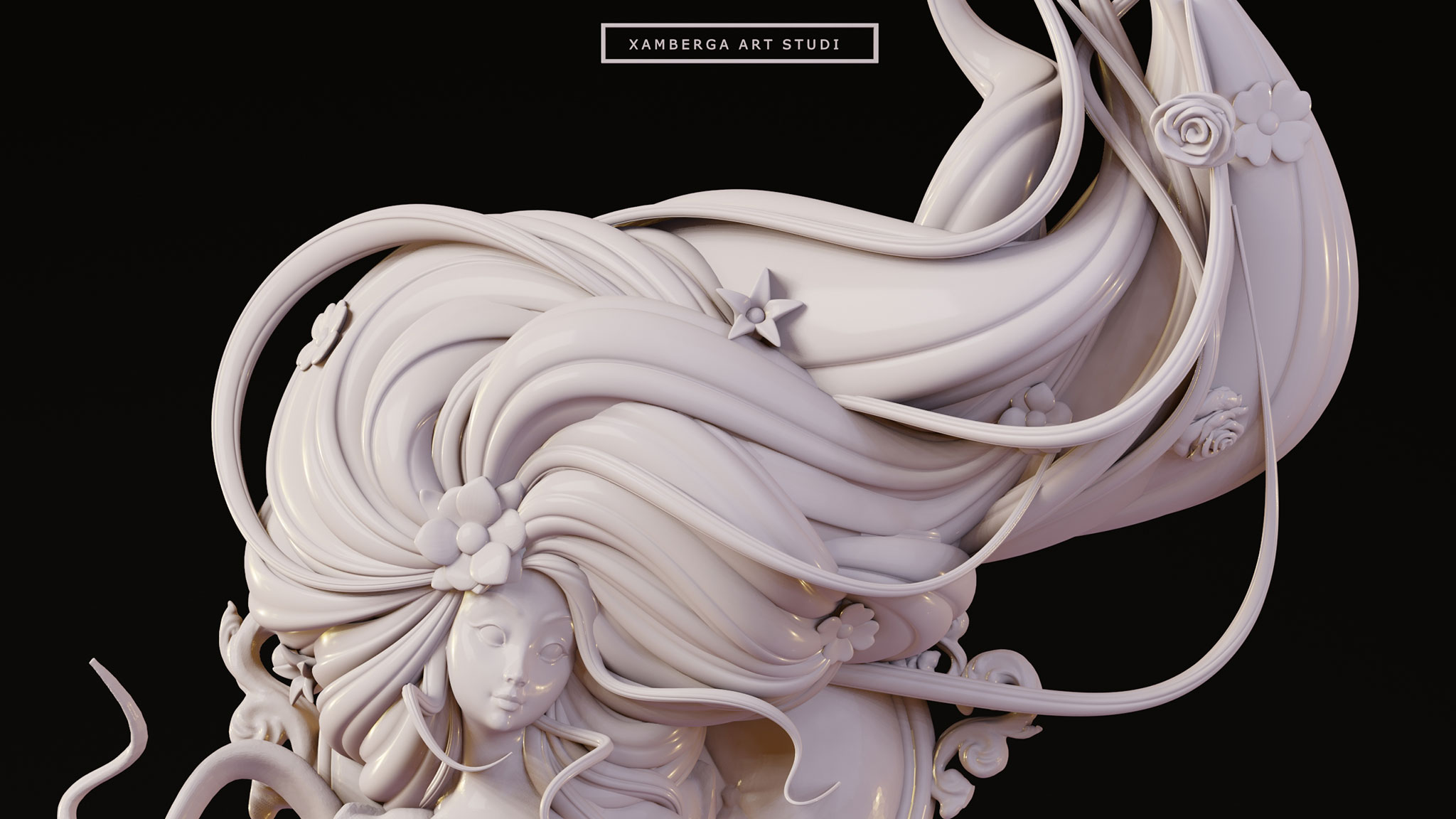According to his biography, Carles Mondrià (Xamberga Art Studi) is a freelance 2D-3D concept artist, large format sculptor, scenographer, designer of stage machinery for theatres, and painter. Carles has designed and realised some Falles, “Las Fallas” (Gigantic Monuments built in the streets of Valencia, Spain, usually made in materials such as cardboard, wood, paper, clothing and then burnt during Saint Joseph’s feast). Some years ago, he started using Blender to create beautiful 3D sculptures who seem real. We love his essential, clean style with a sense of humour. Some of Carles 3D creations sculpting using Blender have become gigantic monuments for the Falles.
Let ask Carles some questions:
You are a traditional sculptor who also uses Blender. Could you tell us more about your background?
The first thing I want to do is thank you for the work you do to publicise the work of Blender users, and it is such a versatile tool that I am constantly surprised by the number of things that can be done with it.
I have classical training in pencil and paper, oil, clay, etc. I finished my university studies in 2007 (although one never ends studying and learning) and I didn’t even have a personal computer, they didn’t interest me, I only thought about oil and clay.
My artistic concerns were not (nor are they) in tune with current trends and to pay the bills I started looking for “less” artistic works that were still linked to drawing and sculpture, and that was how I started working on Falles.
In parallel to my personal work, I have worked as a stage designer for theatre, television, cinema, I have modelled props and characters for animation films (stop motion), I have been a drawing teacher for years, but most of my time I have worked at the Falles.
“Las Fallas” is an exciting and profoundly rooted festival in Valencia, with a past kinder than its present and future. To talk seriously about the Falles, we would need many pages, the reality is always multifaceted, and there are many points of view to understand, so I will only say a summary idea. Falles are a team effort. Formerly it was a more artistic profession. The artist had an atelier, was in charge of the artistic work and directed the rest of the workers. Nowadays, the “boss” of the atelier is not necessarily in charge of artistic creation; instead, he is a manager who coordinates the work of different professionals. Today it is more a business dynamic than an artistic one, and for this reason, it is difficult for me to spend a long time in the same team.
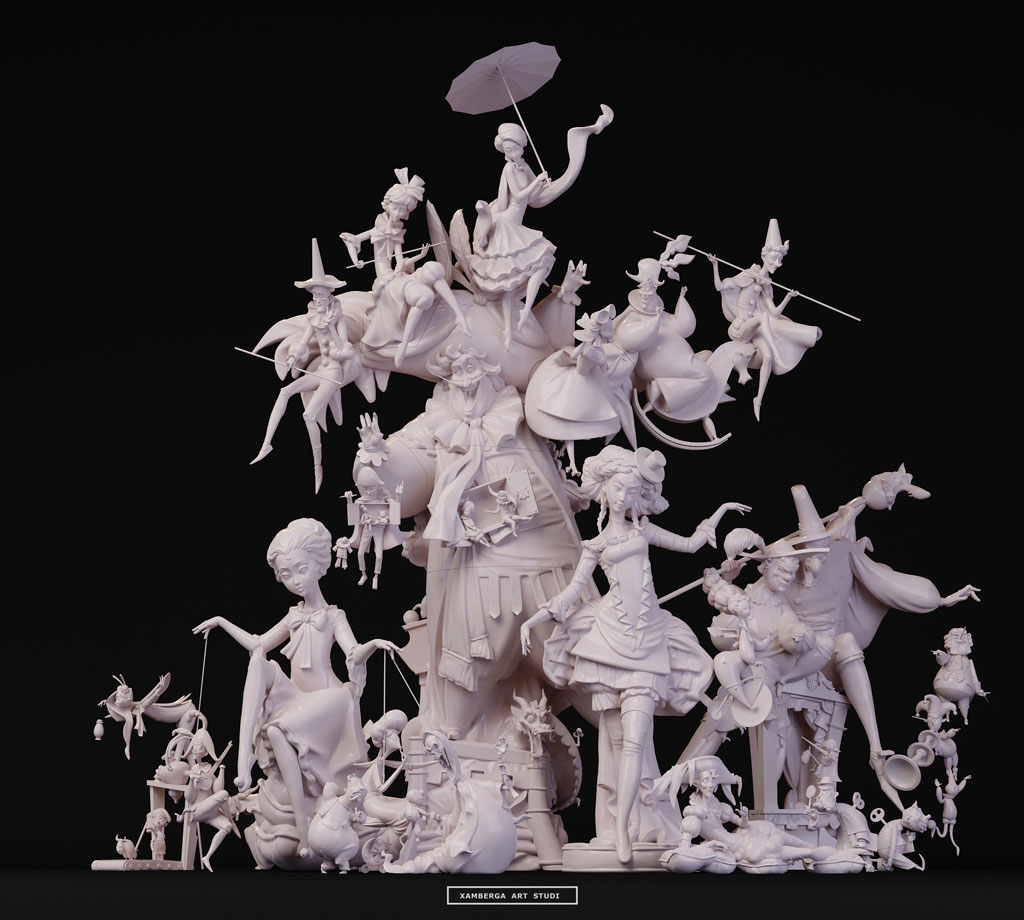
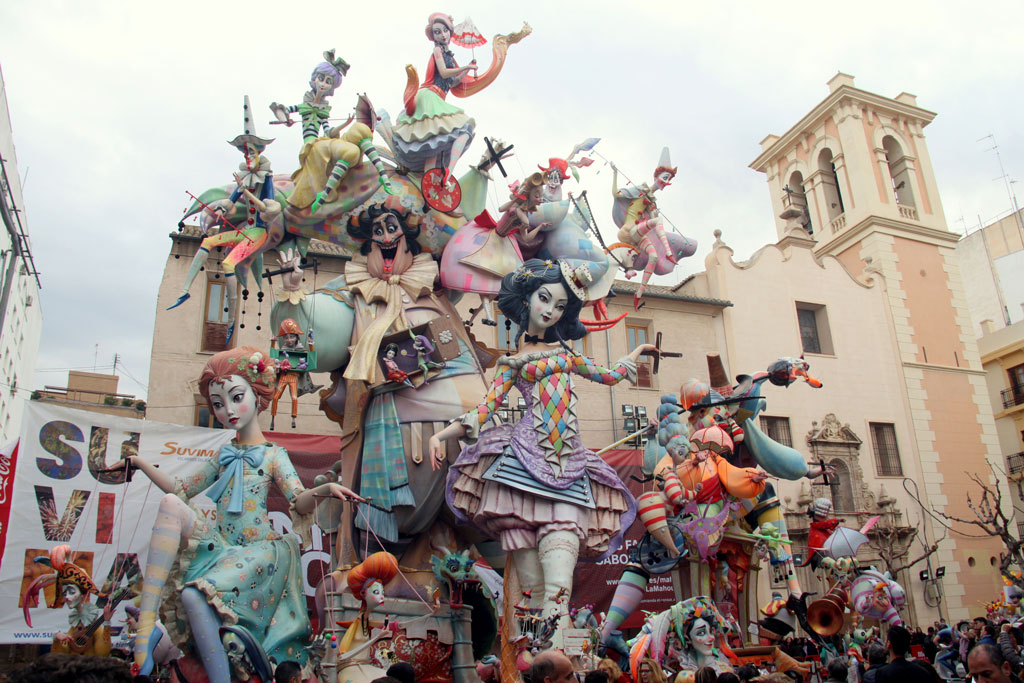
Why did you start to use Blender?
Most commissions started with a sketch that he modelled in clay in a small size. That figure was scanned and digitised, to reproduce in a much larger format. In 2012 I heard from ZBrush, and I thought maybe it would be nice to try working digitally, but the experience was very bad (I have never had a good relationship with computers). Zbrush seemed very, very, very complex to me, and I gave up. I also did some Sculptris work with the same result.
In 2016 I found myself in the same situation, does it pay me to learn to work digitally? At that time, I did some more research, and by chance, I found Blender. A free software! That made me fall in love (my economy has never been really great, and my situation was very delicate because of the 2008 crisis).
Zbrush seemed very very very complex to me years ago… Blender was the same hell! All the information I found was related to Zbrush. All the people I knew or contacted recommended ZBrush (my work is only sculpted). I have always felt that my intuition went against the tide, at university, in my professional and personal life. So, I had to decide to update “yes or yes”, and I would have gone to do that with Blender.
How have you learnt Blender?
Youtube! I started with 2.74, it was not the most updated version, but I did not know that. I worked in a company with a challenging schedule. I left home at 6:30 in the morning and came back at 19:30 or 20:00. After dinner, I used turned on the PC, watching a video on YouTube and I was trying to do the same thing that I saw in the tutorial (I don’t know English very well), and I did that day after day.
It took me a long time to learn the few tools that I use now in Sculpting using Blender; YouTube is an ocean full of information, most of which are not excellent and often neither well organised. Anyway, with effort and determination, you can achieve your targets.
I have many doubts about my knowledge of Blender because I have not been able to go to a Blender “Academy”. I don’t have any Blender “teacher” to give me a Blender “title”. For 18 years, I have had the privilege of being able to go to museums with exciting exhibitions, and I never tire of seeing how it has been drawn, painted and modelled generation after generation. It is a very useful source of knowledge for me.
With the digital world, it is different; there are no software museums, and learning is more organic. Blender is constantly evolving, and this is exciting. It also has a negative point, the minute after you have learnt a tool, they change it. You make an effort to learn the new version, and they change it again. It is the price to pay, but each new version is better, and I think it is worth it.
On the other hand, I work alone, and I don’t know if my way of working is the most fluid. Luckily the Spanish-speaking community is getting bigger and bigger, and that helps, I try to keep up with BlenderHoy, Pablo Vazquez‘s YouTube channels.
For what kind of project do you use sculpting using Blender?
For my personal work, I still prefer clay, for everything else, Blender! Mainly for the Falles. It is a job with a major problem, the budget. They are very low prices, and I cannot spend a lot of time finishing a figure with a quality finish. It bothers me to start a job knowing that I have only x number of hours to finish it, so I have been thinking about looking for other types of jobs that allow me a more elaborate finish and take advantage of all the possibilities of the software.
In Blender, I have only used sculpting features. I don’t know what vertex group, vertex colour, weight-paint, and UV maps are… “too many tools”! This without mentioning animation. So much remains to be learned.
Is there anything missed in Blender as a sculptor tool?
Everything you can imagine that is not in Blender is one thing that is missing in Blender. But the good news is that tomorrow, next week, next month, next year, that thing will be there! I can only have words of thanks to all the people who work to make Blender possible and encourage, as far as possible, that whoever can help, there is no small donation.
The experience of modelling in 3D software can never be compared to the experience of modelling in clay, but I think that is not the purpose. They are very different things. It is true that when the mesh has too many polygons, it becomes heavy and slow to work with. Still, as I said before, the software is continuously evolving; for example, the new cloths filter looks very good, it seems that it will save me a lot of modelling time.
I don’t know of other software to compare with Blender. I can say that even at the beginning is a bit hard; then the reward is well worth it.
Real traditional sculpture vs sculpting using Blender in 3D
I love traditional sculpture, and I love Blender. Blender has been in my life for a few years; it is part of my current professional concerns, numbers, budgets, workflows, files, deadlines, etc.
Traditional sculpture has little space in my work life (unfortunately), but the emotions involved are very different. The curiosity and fears that have grown up with me since childhood find space in my brushes, in “traditional” drawing and sculpture.
How has the current situation affected your work?
It is a mystery, it is a very complicated situation, and I would like to think that all of us, individually and collectively, are going to work hard to get ahead. Particularly in Spain, I observe the political class and the citizens, and I cannot be optimistic.
Almost all the commissions are in the air. I continue working to have the designs finished, but there is no certainty if there will be the Falles Festival.
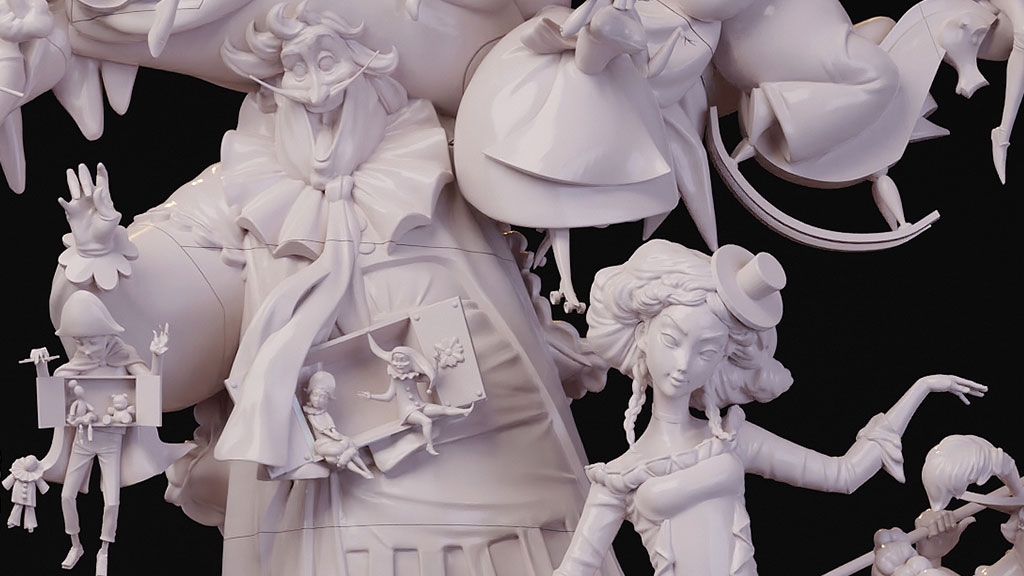
Tell us a bit about your work for the Falles.
I think I have gone ahead and answered this question a little before. Many sectors of society intervene in the Falles, citizens, private associations, economic sectors, artists, tourist exploitation… It is a difficult balance. Artists who work in Falles have been in crisis for years, and the COVID situation may be a definitive blow. As the business logic is stronger than the artistic one, I decided to close my atelier and work for other artists. Basically, they hire me to make the 3D design that will later be made in large format. I have been modelling and painting large format pieces for ten years, but for the last three years, I have only been dealing with 3D design. My main objective is that my client is satisfied with the work that he has entrusted to me; it is not about expressing my concerns.
What is your next project?
My generation finished their university studies in 2007/09, and when they had to join the world of work, the crisis of 2008 exploded. There have been many years of precarious working conditions. The cultural sector had a terrible time and had not yet recovered when this COVID situation happened. My next project is tomorrow.
